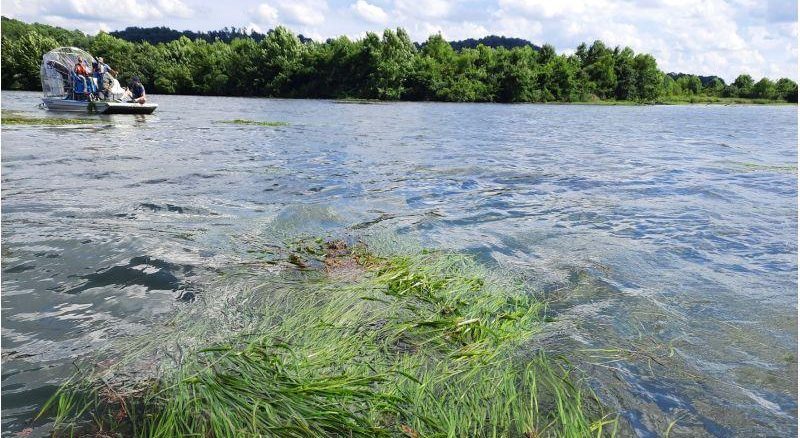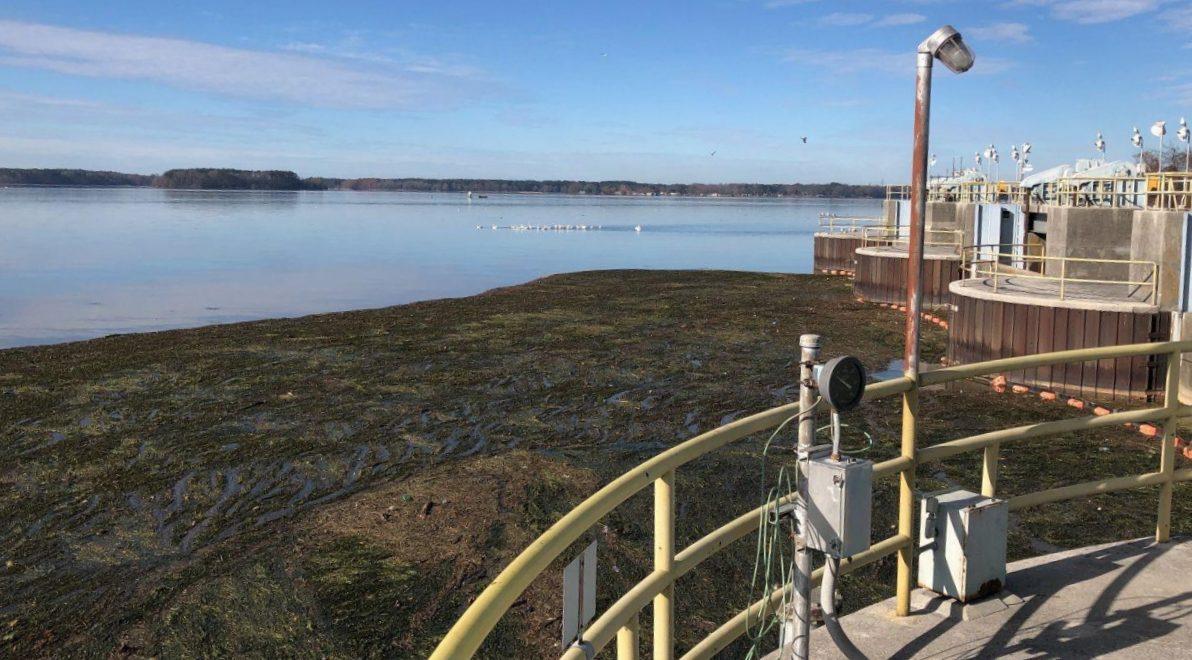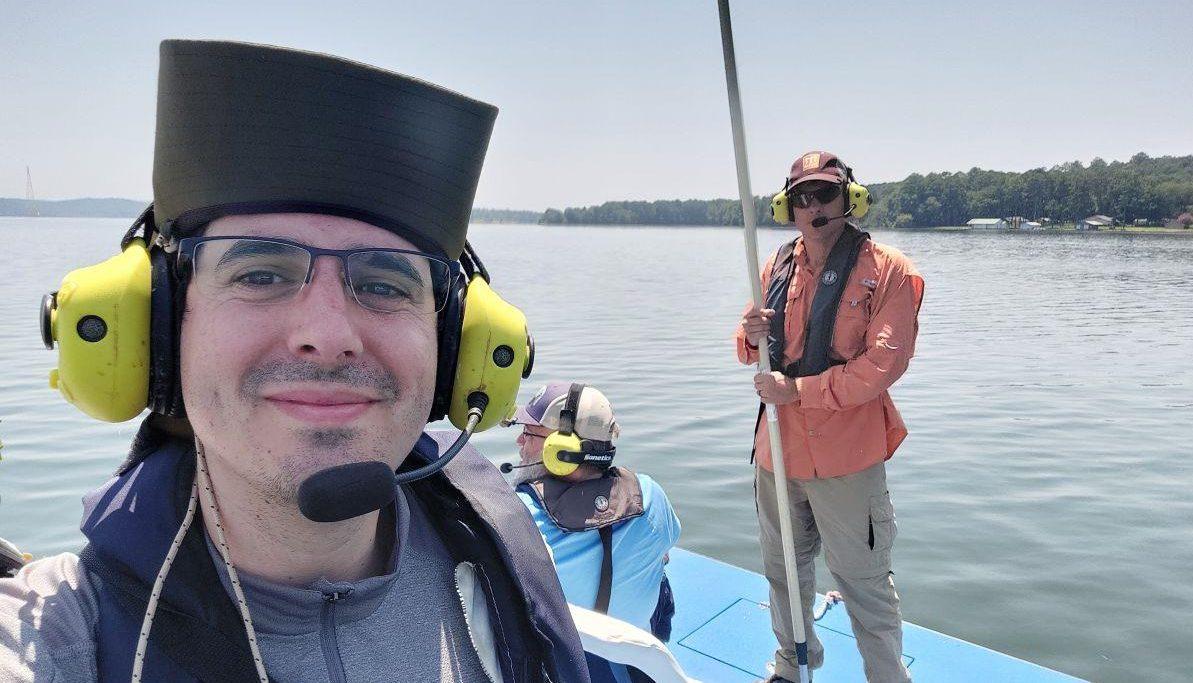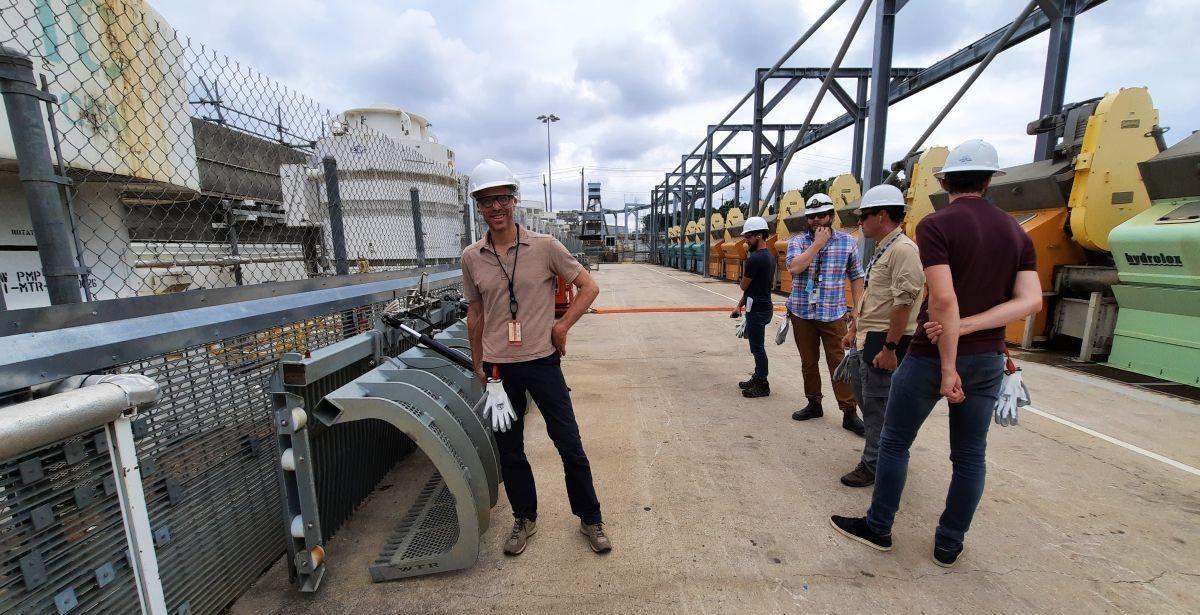Real-time drift warning system
Industries such as power plants or desalination plants withdraw water from rivers or the sea for cooling or freshwater production. Several problems can arise at the water intakes. One such problem is that large amounts of aquatic plant residues and floating debris can clog the intake point. This can bring production to a halt, resulting in potential damage such as power cuts. Deltares developed an innovative real-time debris warning system in which machine learning is applied. This allows industry to respond quicker and take appropriate action.

Olympic pool
Expert hydrodynamics for infrastructure and industry Bas van Vossen was the Deltares’ project leader and explains: "Depending on the cooling system, when power plants suck in water, it can be as much as 100 cubic meters per second or more. You're emptying an Olympic-sized swimming pool every half a minute! Such a process can be compared to a hoover and the suction often involves much more than just water, such as fish, algae, aquatic plants or litter."
Millions in damage
Of course, there are regulations to ensure that the effects of this on the ecosystem are minimal. Furthermore, the challenge for power plants is to let in only water to keep the cooling water system clean. Power plants therefore have (duckweed) racks and further finer mesh systems that prevent floating debris from entering, accumulating and clogging the intake. These systems are designed to protect against clogging even in extreme conditions. Indeed, a shortage of cooling water can shut down production, potentially causing millions in damage.
Jellyfish and seaweed
"Despite all provisions, we regularly see problems worldwide due to almost uncontrollable amounts of, for example, jellyfish, or seaweed. Underlying causes may have to do with changes in ecosystems due to, for instance, climate change, overfishing or sometimes, remarkably, improvements in water quality. It is very complex and difficult to predict where and when this will happen," Bas explains.
In this publication Table 1 listing problematic ingress events at nuclear power stations worldwide, supports his statement. And this list does not include intakes for conventional power plants and desalination which face similar challenges.

Aquatic plants adrift in Tennessee
The Tennessee Valley Authority (TVA) struggled with tons of adrift aquatic plants, eelgrass on the Tennessee River in 2019 and 2020. This caused blockages at power plants with unpleasant consequences. Much of Alabama and Tennessee depends on power from these plants. TVA already had an automated water temperature prediction system at the water intake developed by Deltares and asked if this system could be extended to better see floating vegetation growth.
Warning system
After a quick scan of the problem, Deltares' advice was to automate the removal of accumulating vegetation residues in front of the duckweed racks and to gain a better understanding of the causes through ecosystem research. Those recommendations have been followed. Despite the large investments and outstanding questions about the effectiveness of an innovative warning system, TVA was keen to develop it with Deltares.
Dr. Matthew Boyington, Project Leader Eelgrass, Tennessee Valley Authority (TVA) explains: "Back in 2019 and 2020 we were confronted with very serious vegetation clogging issues at our facilities. So, we embarked on getting a grip on the root causes and mitigating the problems. The cameras and their algorithms are great assets; however, repetition of extreme events like in 2019 and 2020 are needed for further tuning. Luckily for us, problems with the vegetation have not been extreme every year."
I feel we made tremendous steps with increasing our awareness of the role of ecosystem dynamics and developing this forecasting system.
Dr. Matthew Boyington, Project Leader Eelgrass, Tennessee Valley Authority (TVA)

Measuring with machine learning algorithms
"We had some key components, but nothing like this had been made in this combination anywhere in the world. We set up a system with overhead cameras and underwater sonars. Special machine learning algorithms that had been developed for measuring floating debris layers in wastewater basements were converted and trained for recognising floating mats with vegetation residues on the river. The cameras were installed both near the inlet and several kilometres upstream above the river on electricity pylons to detect floating mats of aquatic vegetation. A huge job with a lot of impressive fieldwork. That river is as wide as Hollands Diep and tornadoes can pass by, so it wasn't just a matter of simply installing a couple of cameras and you're done!" says Bas who was there himself in the field a couple of times.
"From those camera images, we can now use machine learning algorithms to determine how much of the water surface is covered with plant debris. Combined with our river flow models, we can then automatically estimate how much floating vegetation will arrive at the inlet when. This gives power plants important extra preparation time they didn't have before."
Video
The animation shows that eelgrass is released at some point in a number of places, after which it starts moving downstream through the main channel past the power plant, or through the Decatur Flats towards the intake of the power plant.
You have not yet indicated whether you want to accept or reject cookies. This means that this element cannot be displayed.
Or go directly to:
Real time observations
Antonio Moreno-Rodenas: "Deploying the camera system was a logistic challenge requiring efforts from the local experts at TVA and us at Deltares. From cybersecurity considerations to the practicalities of mounting and calibrating a camera in 20-meter towers above a reservoir."
"Yet, having access to real-time optical observations in the entire system is of very high value for the operations of TVA. Also, we developed and trained a deep-learning model to assist with the flagging of images with floating vegetation. We still need to validate the system under large eelgrass floating release events."
We are excited to work on it further since these technologies have a very strong potential to facilitate the operation of large-scale monitoring networks.
Dr. Antonio Moreno-Rodenas, Senior Researcher at Deltares

System operational in the United States

The cameras are part of a more comprehensive system in which - besides field observations - we also automatically control hydrodynamic computer models of the river and releasing and floating vegetation. “We deploy Deltares Delft-FEWS (a platform for real-time forecasting and water resource management) for coordinated control of all field measurement equipment and computer models and processing all data streams.” states Bas.
The Delft-FEWS displays provide clear insight into the risk that floating debris poses to the power plant's cooling water intake in the coming days and when extreme amounts can be expected. The system was developed and tested from 2021 to 2024 and is now running operationally in the United States. Interestingly, the model can also be used to better understand when and under what conditions plants will be released and set adrift.
Bas: "Integrating all these technologies into one system and using that data in combination as real-time information was not done before."
It is very special that TVA undertook so many efforts and that we could mobilize such a broad team of very skilled specialists from Deltares to get this system of the ground.
Bas van Vossen, project leader Real-time drift warning system, Deltares
Interest from the industry
The industry appears interested in this new technique, but also realises that problems are often site-specific, and effectively deployable systems are not on the shelf.
Bas: "We are currently starting tests and demonstration project in France with research partners and the industry. Here, too, we are going to smartly analyse and combine data from cameras, sonars and computer models for use in warning systems. We see that there is increasing demand for electricity in the world, so security of supply and robustness of utilities is becoming more important."
Streamlining data with Delft-FEWS
"The aim of Deltares is to help the sector with increased insights and new technologies. Integrally combining all data flows is essential. How do you connect sensors in the field, for example, and how well do they measure it? With Delft-FEWS, we bring together all relevant data flows, including from data sources and computer models not developed by Deltares, and make them transparent. Without this knowledge, the decision for organisations to invest in this is difficult to take." explains Bas.
We are making impact in terms of security of supply of power plants while helping to better understand and protect ecology and ecosystems.
Bas van Vossen
Global application
The system is applicable worldwide. Ecosystems can start to behave differently everywhere, which can affect the functioning of plants. This can lead to nuisance from one species, for example, such as a jellyfish plague or sargassum (large brown seaweeds). Causes can be different, such as climate change or overfishing, but also improved water quality due to environmental legislation and recent efforts.
Smart measures
Sophisticated forecasting systems are not always necessary. Sometimes even simple measures can get you a long way. That is why we always recommend a quick scan in which we examine the causes of the problem and provide insight into the feasibility of solutions, costs and risks.
Solutions quickly require substantial investments, so it is important to weigh up the benefits and necessity. On this basis, we make recommendations from 'simple clean-up' to advanced warning systems'.

Expectations for the future
Due to the absence of extreme amounts of floating plant residues after 2022 in Tennessee, further validation of the warning system is yet to follow. More research and development is needed for wider deployment in the sector.
"A few more successful pilots are needed with major players in the sector. There is still much to be gained in training images from cameras, sonars, radar and satellites, but each of these systems has advantages and disadvantages. Intensive cooperation between ecologists, flow experts, technology experts, modellers, cooling water specialists, system architects and plant operators are a must in this regard to make real strides with this technology," says Bas.
"I would love it if Deltares and a number of partners can help prevent serious problems with this technology in different places around the world."

